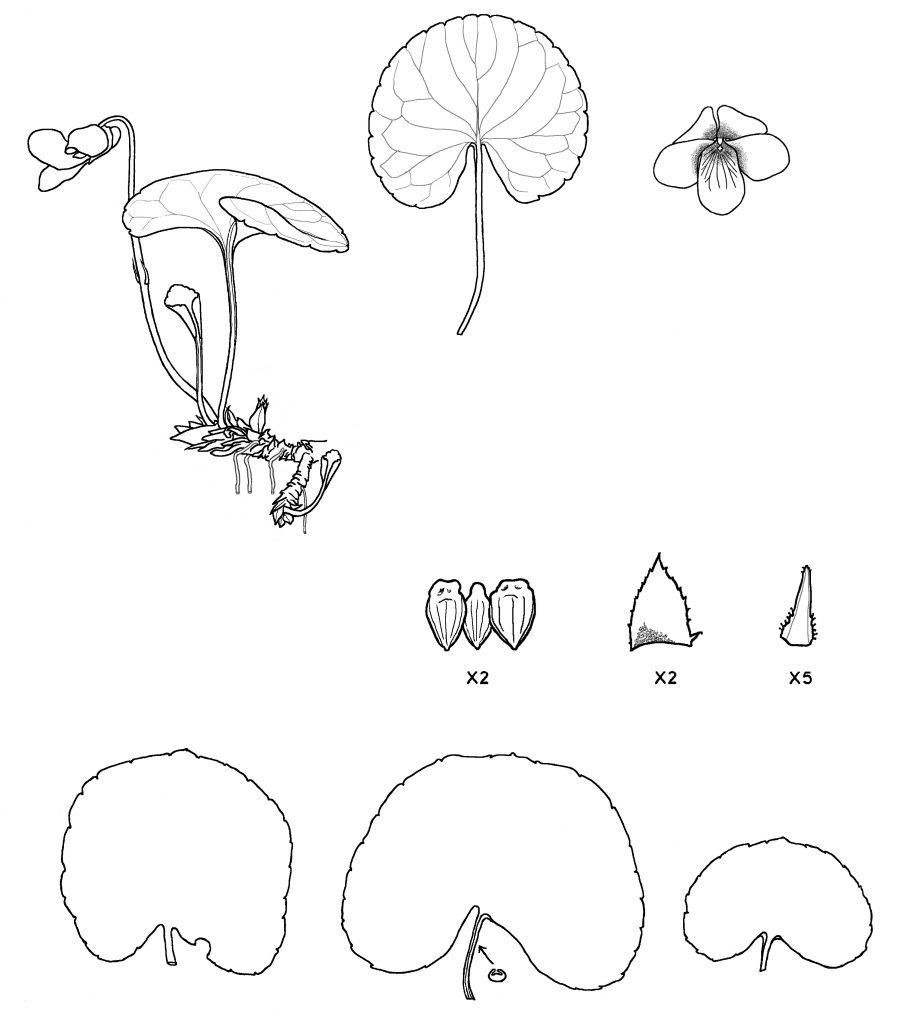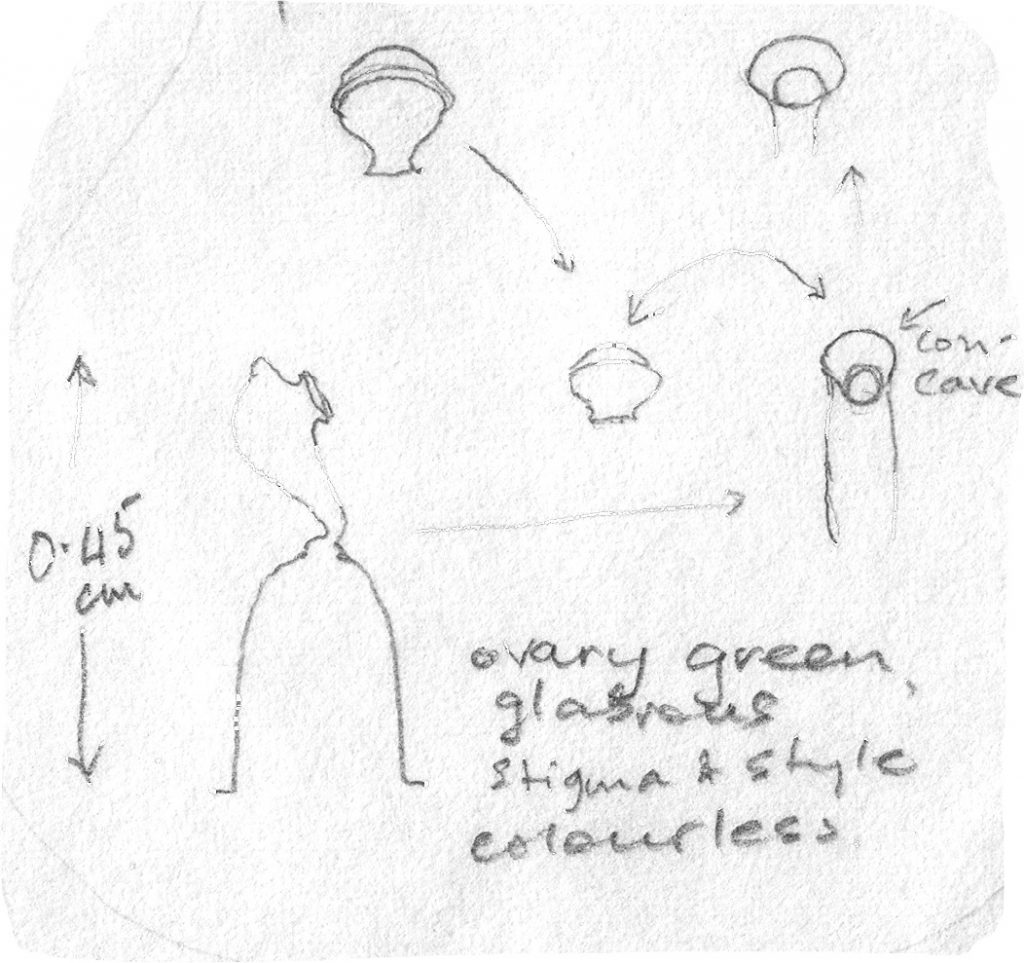Viola palustris L. Marsh violet.
Description and illustrations: 1 photograph of Viola palustris and 3 drawings of V. palustris

Though this violet is common in northern Europe, it is restricted to a small area of far northeastern North America. Its leaves are grayish-green, from creeping rhizomes and with round-faced flowers of a pink-mauve color that is typical of the Palustres violets. The top two petals are usually curved backwards. It is growing in generally poor soils in cold, moist locations, marshy meadows, peat and sedge bogs, woodland edges, banks of rivers or lakes. Its distribution is wide: Russia, northern Europe, Scandinavia, Iceland, Greenland, northeast N. America from Labrador, Newfoundland, south to the high alpine mountain tops of Maine, and New Hampshire. In northern Gros Morne National Park, Newfoundland, it grows in plentiful amounts at 1800-2000 ft in full sun on the cold NE facing slopes of the Appalachian mountain tops where snow is present late into the spring/summer.

Nomenclature:
Viola palustris L. Sp. Pl., 934, 1753.
Full description:
Acaulescent perennial, usually glabrous, 2.5-15 cm high; creeping mat of horizontal branching rhizomes, scaly with persistent dead leaf bases; stolons produced after flowering 3-10cm long, some with elongated internodes. Leaves 2-5 from the growing tip of the rhizome; leaves thick, often grayish with a matte surface, leaf lamina reniform to round-reniform, rounded or sub-obtuse at apex, base cordate, leaves 2.5-5 cm long in flower, to 7.0 cm long in fruit, shallowly crenate (often subentire), in summer leaves convex. Petioles narrowly winged, 1-14 cm long; stipules wide-ovate, slightly toothed margin, acute, free, 0.4-0.5 cm long. Peduncles 2-15cm long, with bracts about middle or lower, bracts with glandular-tipped fimbriae on margin, 0.25-0.35 cm. Sepals and auricles 0.55 cm; sepals ovate, short, ending abruptly, 0.3 cm wide x 0.4 cm long; sepal appendages short, rounded at end, 0.1-0.15 cm. Flowers, pink-mauve or whitish, four top petals darker pink at throat, upper two petals reflexed, lateral petals wider than those of north-western population, bright pink guidelines, no hairs on lateral petals, lower spurred petal guidelines purple changing to bright pink at the end; tip of lowest petal to end of spur 1.6 cm long; petal spur 2mm long, half as long again as calycine appendages. Ovary and style green, glabrous, thick disc-like end to stigmatic head with broad stigmatic opening; capsule ovoid, glabrous, seeds very dark brown to black, 1.7 x 1.0 mm. Fl. April – June; fruiting July. 2n=8x=48.

